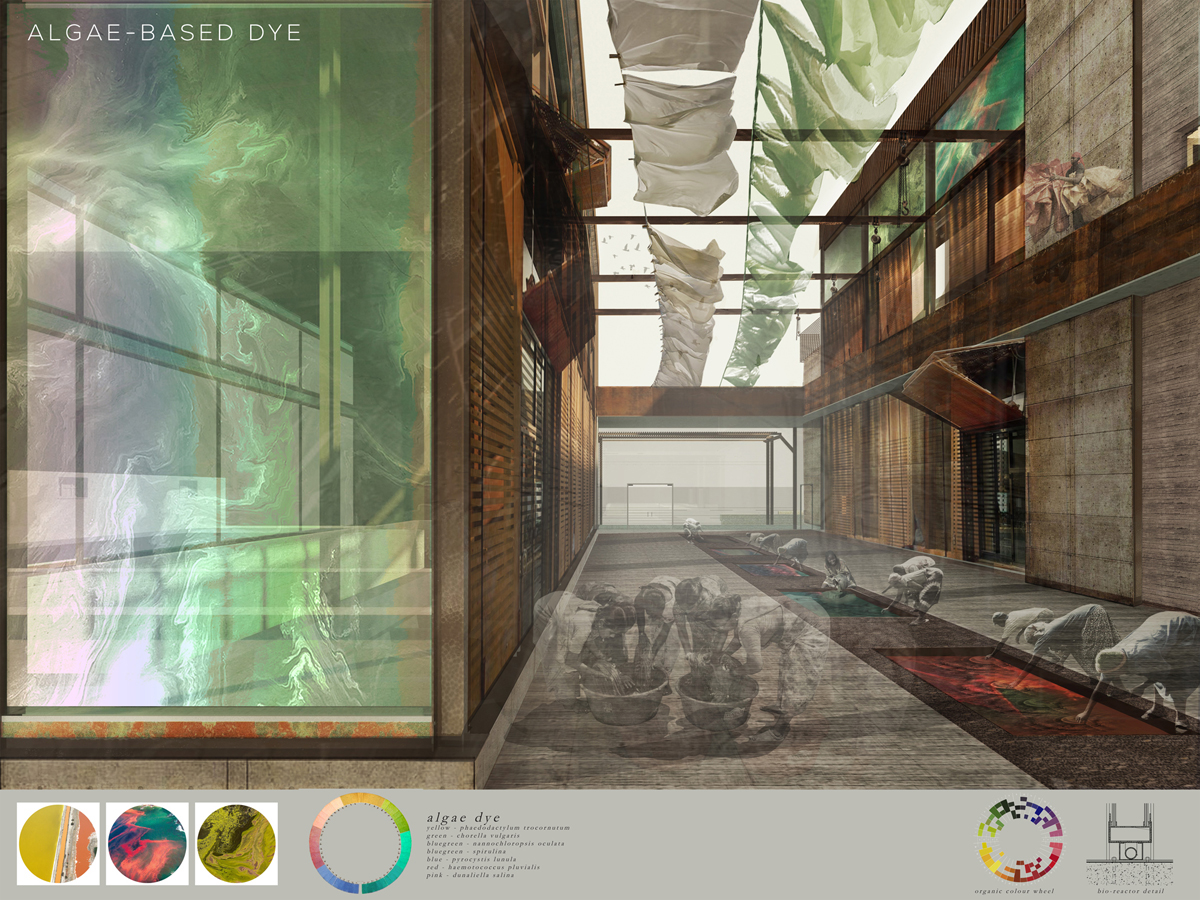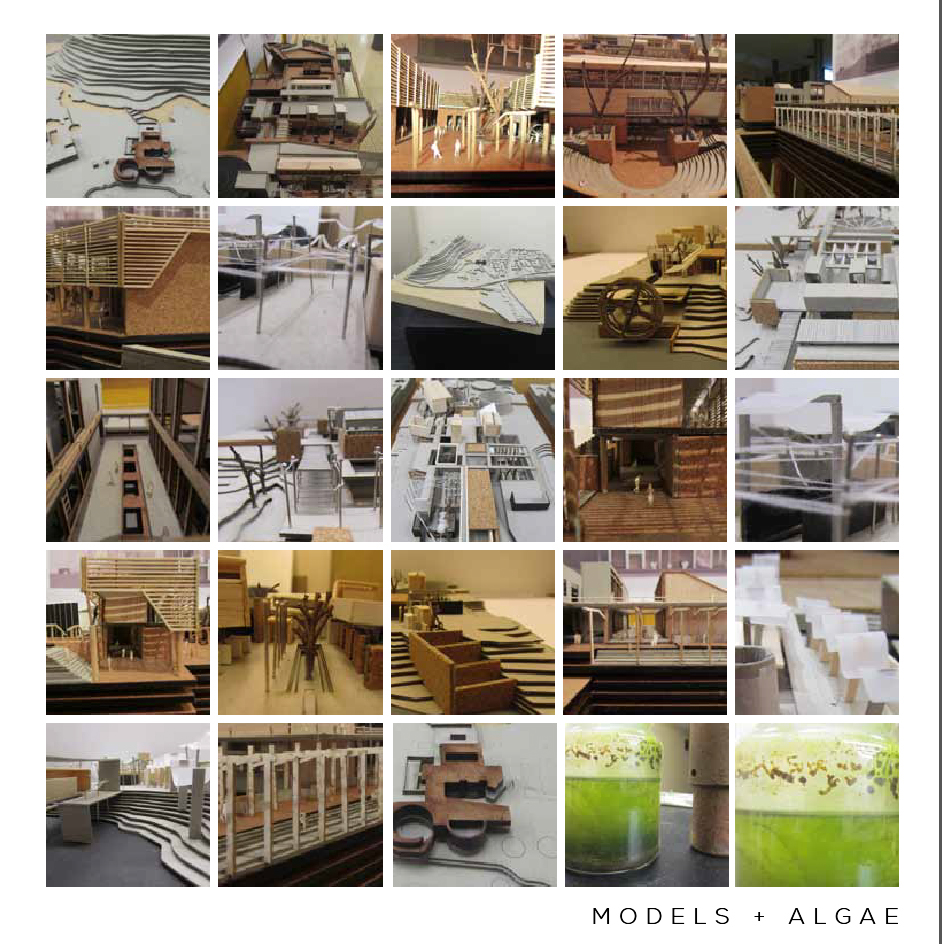MACHINARIUM
Architecture as a living machine; a 21st century textile mill
Machinarium alludes to new ways of architectural place-making in a rapidly changing, 21st-century world.
The project investigates industry as an urban catalyst – a mechanism with which to regenerate urban environments and re-integrate fragmented socio-ecological systems.
This Post-Industrial approach to production (or ‘Regenerative Design), integrates localised social systems, economic structures and industrial programmes with natural ecologies to generate Architecture. Architecture thus expands beyond the constraints of a building, but is expressed as complex, inter-connected systems ranging from Macro- to Micro-scale.
In doing so, Machinarium redefines modernist concepts of space-making (segregation, isolation and waste), by re-structuring the Textile industry as a collaborative landscape. In this Architectural system, all waste produced by industrial processes is re-claimed as resources, creating as self-sustaining closed-loop system.
In an attempt to redefine modern concepts of waste and mitigate the flood of pollution emanating from 20th century industrialisation, the investigation is contextually based in an ‘urban wasteland’ – the Daspoort Wastewater and Sewage treatment Works. The site is re-programmed as part of the new industrial ecology, an architectural system which re-uses waste water and other untapped resources on site to produce textiles, bio-and-hydropower, and algae-based dye.
The township of Marabastad borders the chosen waste water site to the south. As part of the systemic design, an urban vision is proposed in which Marabastad is integrated as part of the Textile-based industrial ecology. The proposed textile mill becomes an urban catalyst which regenerates the forgotten socio-cultural heritage of Marabastad and reconnects the township to its surrounding natural environment. The productive nature of the Mill also redefines the Daspoort Sewage Plant as a productive environment and induces a productive ethos in the larger Marabastad contex, generating vibrant new cultural identity and economic potential for the larger precinct.
By integrating the local urban community and direct natural eco-systems with the industrial space, the 21st-century textile mill is generates a holistic environment which blurs present-day distinctions between social, productive and natural space, and proves that there is productive value in the resources we discard as ‘waste’.

organic bast fibres are cultivated to minimise water usage and increase biodiversity. These include hemp, flax, and kenaf.

section through entire scheme: public to production, terminating in the natural riparian ecology of the Apies.

Algae is cultivated to produce natural dyes. The same algae is also used in bio-reactors to generate power, and algae waste is re-directed to aquacultural ponds for water purification.

the local community is encouraged to participate in the textile mill through tourism, informal economy and training programmes for fashion & textile production.

aerial representation of the entire mill scheme, including southern marabastad township & northern river edge.

pre-mapping & research into contextual potential, textile ecology & waste-to-resource possibilities.


flood mitigation strategies & regenerative design along the damaged Apies River edge: The mill extends the natural landscape and serves as habitat for natural organisms.

passive energy is generated through steam-and-hydropower, as well as throug bio-reactors and digesters.

plan-to-section & site

plan-to-section and site

view over entire site. cotton cultivation takes place in old waste infrastructure, utilising existing waterways & mechanisms.

as a social activator, the site enables events such as fashion shows to showcase new textiles & local talent.

